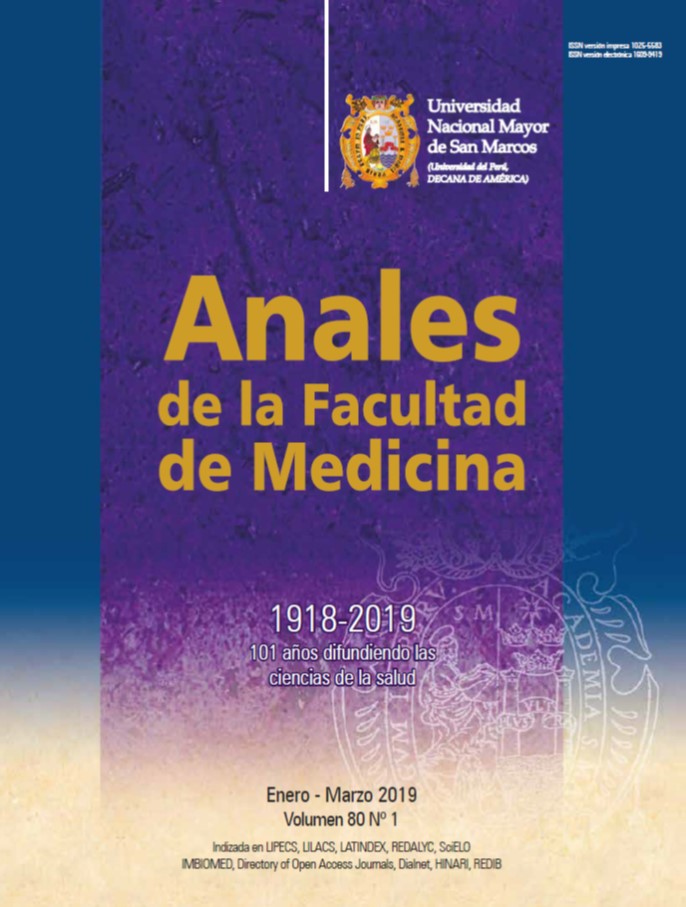Prevalence of dementia and functionality in a geriatric clinic in Huancayo, Peru, 2016-2017
DOI:
https://doi.org/10.15381/anales.v80i1.15583Keywords:
Prevalence, Dementia, Executive Function, Aged, PeruAbstract
Introduction. Dementia is a public health problem; the World Health Organization promotes its research for the implementation of health policies against this disease. Objectives. To determine the prevalence of dementia and describe the functionality of older adults in a geriatric clinic in Huancayo, Peru. Methods. Observational and cross-sectional study, in a random probabilistic sample of 382 patients. Results The average age was 82,6 years, 60,7% was female, the primary education level was 49,7%, the place of origin Huancayo was 29,6%. The prevalence of dementia was estimated in 9,9%, mild cognitive deterioration in 11%. In basic activities of daily life, 19,4% had partial dependence; and in instrumental activities of life, 23% severe dependence. Conclusions. The prevalence of dementia in the sample studied was 9,9%, of mild cognitive impairment 11%. Likewise, 19,4% showed partial dependence and 23% severe dependence.
Downloads
Published
Issue
Section
License
Copyright (c) 2019 Anales de la Facultad de Medicina

This work is licensed under a Creative Commons Attribution-NonCommercial-ShareAlike 4.0 International License.
Those authors who have publications with this magazine accept the following terms:
- Authors will retain their copyrights and guarantee the journal the right of first publication of their work, which will be simultaneously subject to Creative Commons Attribution License that allows third parties to share the work as long as its author and its first publication this magazine are indicated.
- Authors may adopt other non-exclusive licensing agreements for the distribution of the version of the published work (eg, deposit it in an institutional electronic file or publish it in a monographic volume) provided that the initial publication in this magazine is indicated.
- Authors are allowed and recommended to disseminate their work over the Internet (eg: in institutional telematic archives or on their website) before and during the submission process, which It can produce interesting exchanges and increase quotes from the published work. (See El efecto del acceso abierto ).



